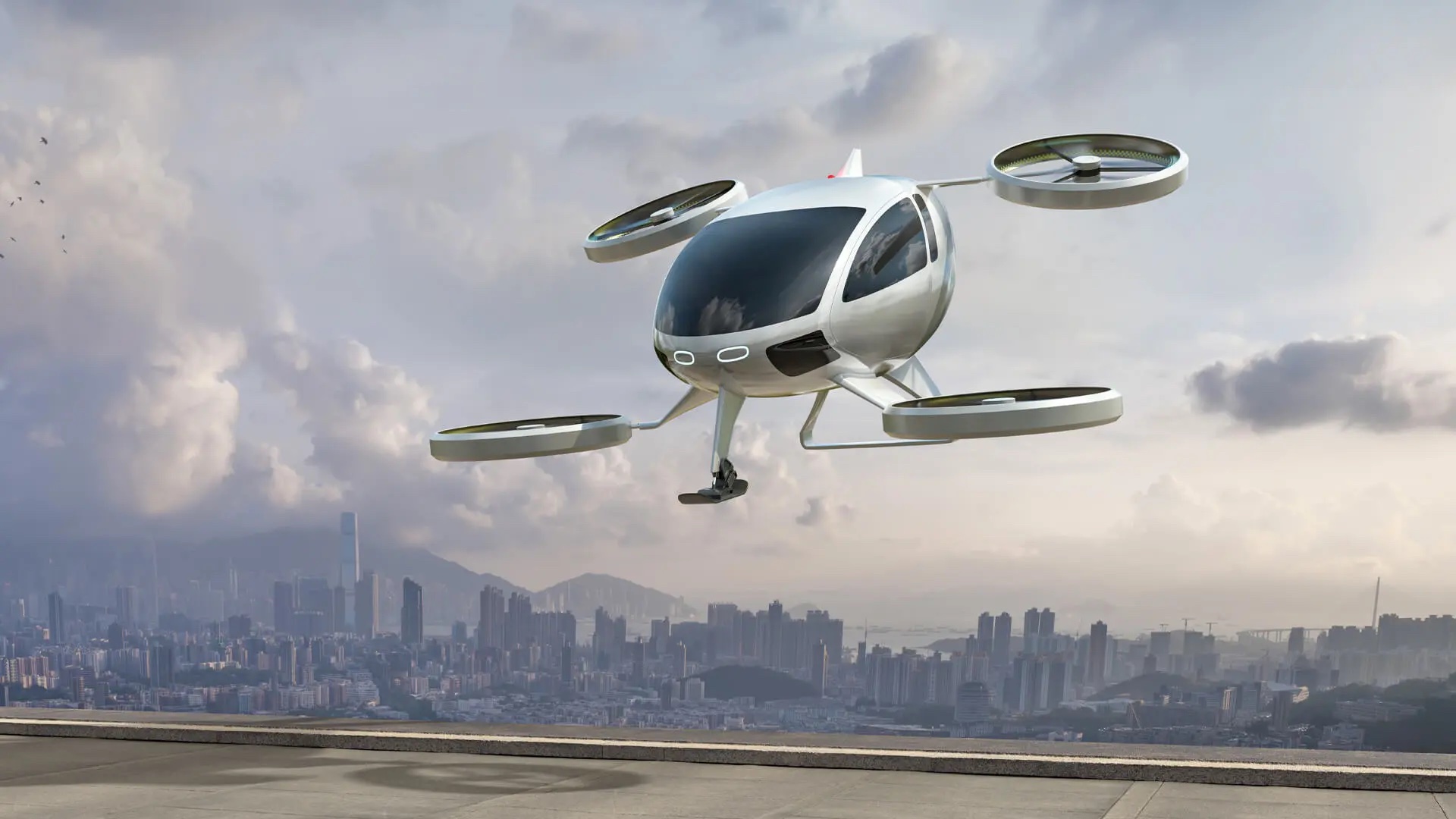eVTOLs: Is the vertical mobility hype justified?
Car manufactures are now throwing investment money and manufacturing know-how at flying taxis, begging the question, is this really necessary?
evo Magazine column, Januaray 2023

I cannot stop thinking about Conan O’Brien. For months now, the comedian has been living rent free inside my head. Involuntarily, I should add. Specifically, it’s because O’Brien wrote one of the most iconic The Simpsons episodes: Marge vs the Monorail. The story revolves around a conman who convinces Springfield to spend $3million of funds on a solar-powered monorail instead of fixing its broken roads. It turns out to be a well-trodden scam, and the train is a death trap. It is truly genius writing and incredibly timeless. I think about this episode every time some kind of new and pointless technology emerges, a billionaire wants to shoot his space junk into space or a celebrity techpreneur drops a half-baked yes-men-and-VC-backed idea masquerading as a ponzi scheme that is supposed to somehow better humanity. And you’d be surprised how often the latter one happens. I mean, remember NFTs?
Most recently, the catalyst has been the growing promise of flying cars. AKA ‘vertical mobility’—electric vertical take-off and landing vehicles (eVOTL) which are short-range electrified flying passenger crafts, like drone taxis. The biggest use case claim has been nothing short of an individualist Silicon Valley cliché. Instead of offering societal-bettering schemes, like, flying doctors or emergency services solutions, most eVOTL startups shill the crafts as ‘a hassle free way to get to the airport,’ ‘for exploring the city’, or my favourite from US eVOTL startup Archer Aircraft, ‘free people from the burdens of everyday commuter traffic’. I’m not sure how an unrealised giant drone managed to commute-shame me and call me a peasant, but reading that website, it just did. At least when the Concorde did, it executed with finesse.
In case you’ve missed it, autonomous driving is out and vertical mobility is in. Recent events have seen OEMs shyly shift from talking about autonomous futures and focus more on electrification, battery tech and urban mobility ideas. The failure of autonomy as a reality has seen a lot of investment move to more short-term solutions, such as battery tech and supply chains, or new technologies that aren’t crazy moonshots, like vertical mobility. Why? It’s a lot easier to scale vertical mobility for the private jet-setters needing a lift to the airstrip in a few cities than it is to get all the world’s roads, drivers and passenger vehicles ready for Level 5 autonomy, let alone achieve it in the first place. So who’s in? Stellantis is manufacturing with Archer Aviation (which has already pre-sold 100 crafts to United Airlines), Toyota is helping design the manufacturing plant of Joby Aviation (the company that acquired Uber Elevate), Honda has its own eVOTL company called Supernal and has already entered into an air taxi agreement with the city of Miami, Mercedes-Benz Group has a partnership with Germany’s Volocopter and Porsche’s consulting arm is working with Brazilian aerospace company Embraer's Eve Air Mobility to help produce a four-passenger craft, in addition to a Boeing collaboration. Porsche Consulting actually released two reports on the market, one in 2018 which predicted the technology would take off by 2025 and another in 2021, a self-correction of sorts, that took the current post-COVID market into scope.
In Porsche Consulting’s 2021 vertical mobility report, there are a few flags that caught my eye —because with all the noise around the technology, you’d think it was happening soon. Not the case. The report states that investors shouldn’t expect any return for ten years, but also, that for vertical mobility to be a reality, it needs social acceptance, scale —‘a global network of more than 15,000 eVTOLs in more than 30 cities, operating from 1,000 to 2,500 vertiports’— and of course, the infrastructure for the actual vertiports. Consider this: most cities don’t even have enough pubic space to build the infrastructure for all the fast-charging stations we need to make EVs a reality (let alone enough real-life affordable EVs) nor is there always viable alternate travel options (such as an interstate high-speed rail system). How will vertiports happen?
‘But Main Street's still all cracked and broken; Sorry, Mom, the mob has spoken’ —this is where I channel Marge Simpson. In the past few years, we’ve all got to a point where we’ve accepted proven technology and made sacrifices that help the earth for the next generation, not just us. Do we need to spend money and energy on startup founders’ sci-fi wet dreams of buzzing machines in the sky and below, which will further act as class dividers, all because most American cities and the Victorian State Government refused to invest in clean, fast and easy ways to get to the airport? Actually…maybe, in this case, a solar powered monorail might be the better idea.